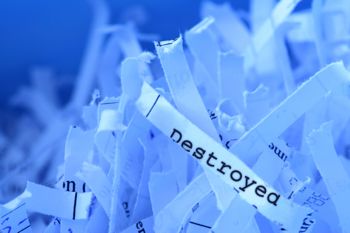A magazine where the digital world meets the real world.
On the web
- Home
- Browse by date
- Browse by topic
- Enter the maze
- Follow our blog
- Follow us on Twitter
- Resources for teachers
- Subscribe
In print
What is cs4fn?
- About us
- Contact us
- Partners
- Privacy and cookies
- Copyright and contributions
- Links to other fun sites
- Complete our questionnaire, give us feedback
Search:
Tours of Babel
by Tony Veale of University College Dublin

When you wish big, be careful what you wish for. Take a story called The Library of Babel by Argentine writer Jorge Luis Borges. The library of the story is a fantastically vast construction of hexagonal rooms, containing every book that was ever written, as well as every book that can, or will, ever be written. The library is finite but huge: it contains every book that can be written with a 25 character alphabet in 410 pages at 80 characters per line and 40 lines per page. It's easy to imagine such a library, and easy in principle to construct one too, but the library is not as useful as it might seem. For every good book hiding on the shelves, there are countless millions of nonsense books containing random text, and worse, countless millions of half-nonsense books that mix real insight with random nonsense. There is no definitive catalogue for the library, but since a catalogue is itself just a book, the library contains millions of books claiming to be catalogues, almost all of which are gibberish, while many are just misleading.
Borges showed us that extremes are easy: to generate everything we just need an alphabet and a simple way to combine them, and to generate nothing we need just do nothing. The real challenge is to generate something in between with meaning and literary merit that is not random and not a rehash of what someone else has already written.
Simple ways combining letters or methods that cut up existing texts and put them back together in random orders are called mere generation, generation for the sake of it. Though the results might occasionally be seen as creative by an outside person, the generator itself can't tell the good outputs from the nonsense, just like Borges' library has no way of separating the good books from the bad. What if we start with an existing book by a respected author, and make scripted changes to this book to obtain a new one that is different but meaningful? We call this pastiche if the new text remains close enough to the original to successfully piggyback on its meaning. When we build software systems to be creative like humans, it is tempting to build ones that specialize in mere generation or in pastiche, because these two extremes are the easiest to implement. They also need the least amount of knowledge about the world to be built in to the software.
To see mere generation and pastiche in the wild, just go to Twitter: some of the biggest offenders are human, relying on the same old tropes and cut'n'paste techniques, but there are plenty of computers too, in the guise of Twitterbots. Some of these 'bots use mere generation and pastiche to humorous effect, such as @pentametron, which puts together pairs of random tweets from real people if they can be given a poetic cast in iambic pentameter. Here's an example: "Still waiting for the good in that goodbye" and "It's really fun forgetting to reply." The trick is that the reader is willing to imbue this pair of lines with the connective tissue of real meaning, even if the lines are only chosen for their obvious rhyme.
Computational Creativity researchers are now building Twitterbots that use their knowledge of the world to generate micro-texts that the bots themselves consider meaningful and worth sending out into the world. This new generation of bots must apply their own filters about meaning and beauty to figure out what they are trying to say and to determine how well they are saying it, throwing away the worst and only tweeting the best. A good example of this new kind of bot is @MetaphorMagnet, which generates a novel but meaningful metaphor every hour or so. Here is an example: "To some amnesiacs, memory is a treasured blessing. To others, it is an overlooked error. #MemoryOrBlessing" How might you build a metaphor machine that generates new but meaningful metaphors? It's easy to build a machine that generates random combinations of words that fit a template like "An X is a Y", but how would you choose X and Y to offer a valuable perspective that can help people to think about a familiar topic in apt new ways? If you have some good ideas, why not put them into action with a Twitterbot of your own?
One day the majority of users of Twitter may be bots, bouncing texts and ideas off each other in a magnificent society of artificial minds, as we humans look on in wonder and amusement.


